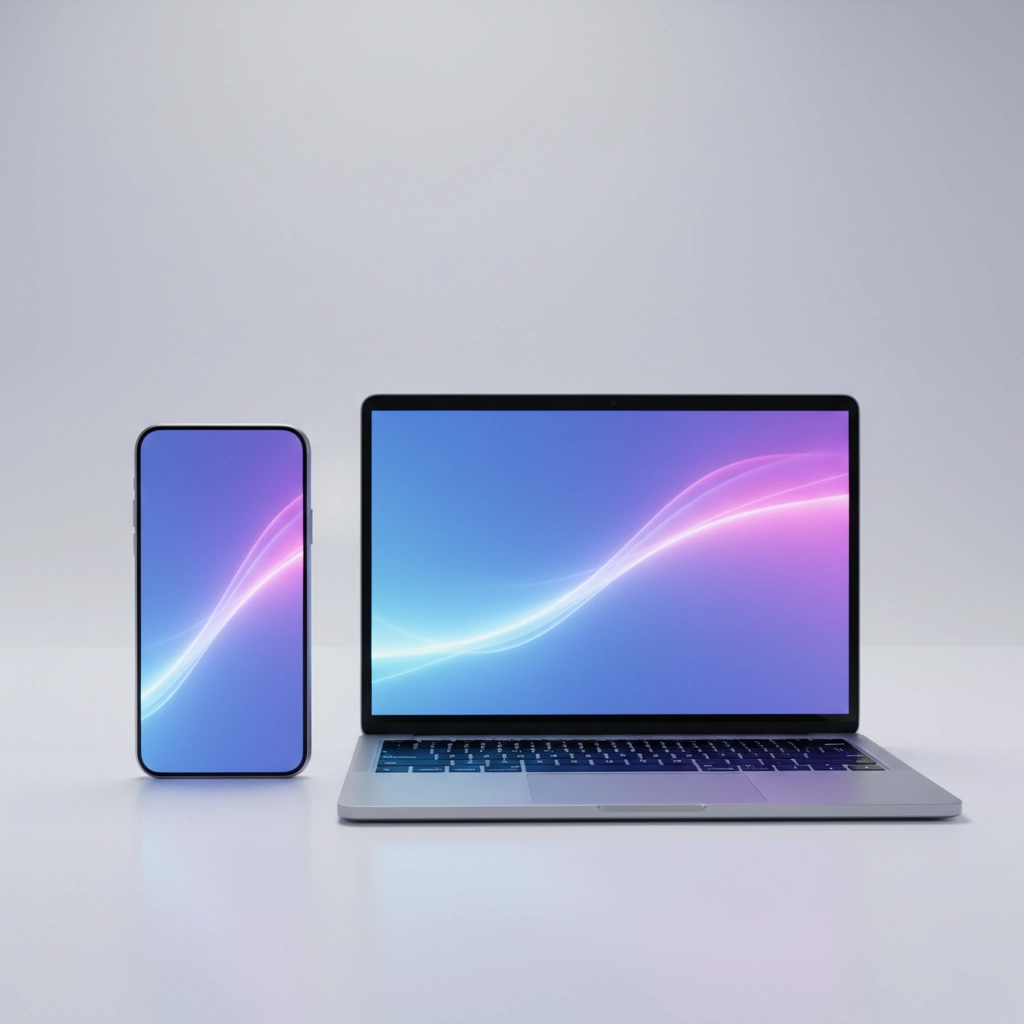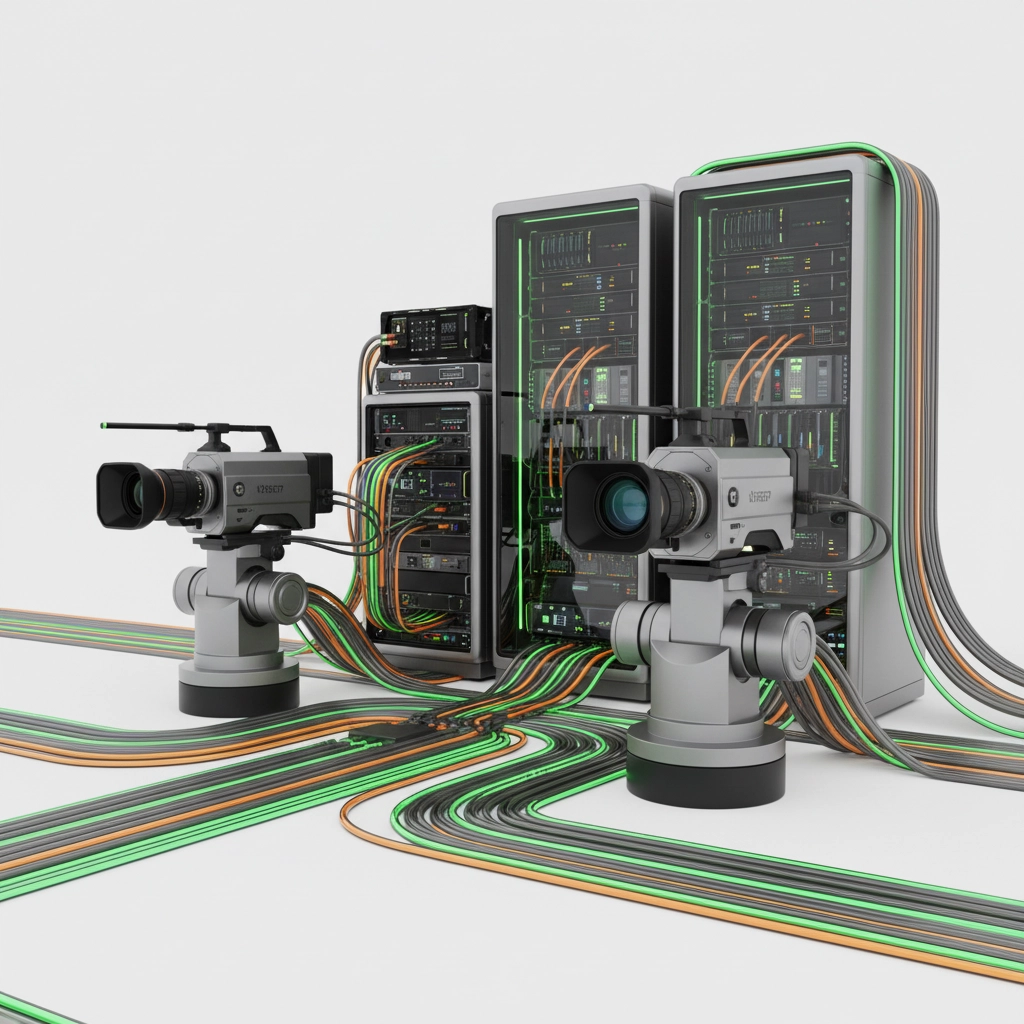Picture this: You're running a major corporate event, and half your audience is watching on their phones while walking between meetings, while the other half is glued to their desktop screens in conference rooms. Until now, you've had to choose: optimize for mobile viewers with vertical video, or stick with traditional horizontal streaming for desktop users.
YouTube just changed the game completely.
On September 16, 2025, YouTube announced what they're calling "the largest upgrade to Live we've ever made" at their Made on YouTube 2025 event. The star of the show? Dual-format streaming that lets you broadcast simultaneously in both horizontal and vertical formats with a unified chat experience.
For event production companies, this isn't just a cool new feature: it's a fundamental shift that could make or break your streaming strategy in 2025 and beyond.
What Dual-Format Streaming Actually Means for Your Events
Here's the deal: YouTube's new dual-format streaming allows you to send both a vertical stream and a horizontal stream from your encoding software at the same time. Your mobile viewers get their preferred vertical experience, while desktop users stick with traditional horizontal viewing: all in one unified broadcast.

But here's where it gets interesting for event producers like you. The system includes a combined chat system that unifies viewer interactions across both formats. No more managing two separate YouTube dashboard instances or worrying about fragmenting your audience engagement.
Think about your last hybrid conference. Remember how you had to choose between optimizing for the executives watching on laptops and the attendees streaming on their phones during breaks? Those days are over.
The Technical Reality Check You Need to Hear
Let's be real about what this means for your infrastructure. Dual-format streaming isn't just flipping a switch in YouTube Studio. You're essentially running two simultaneous broadcasts, which means:
Your bandwidth requirements just doubled. If you were comfortable with your current internet setup, you might be in for a surprise. You'll need significantly more upload bandwidth to maintain quality on both streams simultaneously.
Your encoding power needs to step up big time. Your current encoding setup might handle single-format streaming just fine, but dual-format streaming is a whole different beast. We're talking about real-time encoding of two different aspect ratios, each optimized for its respective viewing experience.
Your backup systems become even more critical. With dual-format streaming, you're not just worried about one stream failing: you need redundancy for both formats. A single point of failure could take down both your horizontal and vertical streams simultaneously.

This is where many event production companies are going to hit a wall. The technical complexity isn't just about having better equipment: it's about having systems that are designed from the ground up to handle redundancy and failover scenarios.
New Monetization Opportunities (That You Probably Haven't Considered)
YouTube's 2025 update introduces side-by-side ads specifically for mobile viewing. This creates entirely new revenue streams that are optimized for vertical format consumption.
For your corporate clients, this could mean additional sponsorship opportunities. Imagine being able to offer sponsors different ad placements for mobile versus desktop viewers, each optimized for the viewing experience.
The platform also enables seamless transitions from public to members-only streams during live events. You can start with open registration, then transition to premium content for paying members without missing a beat. This is huge for conferences, training sessions, and exclusive corporate communications.
AI-Powered Content That Works While You Sleep
Here's something that'll save you hours of post-event work: YouTube's new AI-powered highlights system automatically identifies compelling moments from your stream and converts them into YouTube Shorts.

Think about it: no more manual video editing to create social media clips. No more trying to identify the "best moments" from a three-hour conference. The AI does the heavy lifting and creates discoverable short-form content that keeps your event visible long after it ends.
This isn't just convenient; it's strategic. YouTube's algorithm heavily favors Shorts, and now your live events can automatically feed that content pipeline without additional production effort.
Interactive Features That Keep Audiences Engaged
YouTube is integrating Playables (their catalog of free mini-games) into vertical livestreams. Before you roll your eyes thinking this is just for gaming streamers, consider the possibilities for your events.
Pre-show networking? Drop in some interactive games while attendees are waiting for the main presentation. Conference breaks? Keep people engaged instead of losing them to email or other apps. Corporate team-building sessions? You've got built-in interactive elements that work seamlessly with your stream.
The platform is also testing live reactions and co-streaming capabilities. This means you could have multiple perspectives on the same event: maybe executive commentary alongside the main keynote, or breakout discussions that reference the primary stream.
Timeline and What You Need to Do Now
Multi-format streaming is currently in testing and will roll out to all creators "in the coming months." That might sound like you have plenty of time, but here's the reality check: if you wait until it's fully available to start planning, you'll be scrambling.
Start auditing your technical infrastructure now. Your current setup might be perfect for single-format streaming, but dual-format is going to expose weaknesses you didn't know existed.
Review your bandwidth contracts. Most production companies have bandwidth that's "good enough" with some headroom. Dual-format streaming is going to eat into that headroom fast.
Consider your backup and redundancy systems. With dual-format streaming, a single point of failure affects twice as many viewers. Your backup systems need to be bulletproof.

Why This Matters More Than You Think
YouTube isn't just adding features: they're responding to a fundamental shift in how people consume live content. More than 30% of daily logged-in viewers watched live content during Q2 2025. That's massive growth, and it's happening because platforms are finally adapting to how people actually want to watch.
For event production companies, dual-format streaming represents both an opportunity and a necessity. You can reach broader audiences and maximize engagement across different viewing preferences: but only if your technical foundation can handle the complexity.
The Expert Advantage
Here's the truth that nobody wants to say out loud: most event production setups aren't ready for dual-format streaming. The technical requirements, the redundancy needs, the bandwidth demands: these aren't problems you can solve with consumer-grade equipment and crossed fingers.
When your client's major product launch is streaming to thousands of viewers across multiple formats, and something goes wrong, "we're learning as we go" isn't an acceptable answer.
This is exactly why companies partner with experienced live streaming specialists. When YouTube launches features that fundamentally change how streaming works, you need teams that understand not just the new capabilities, but how to implement them reliably at scale.
Ready to future-proof your event streaming for YouTube's dual-format world? Let's talk about building a streaming setup that's ready for whatever 2025 throws at it.


.jpg)